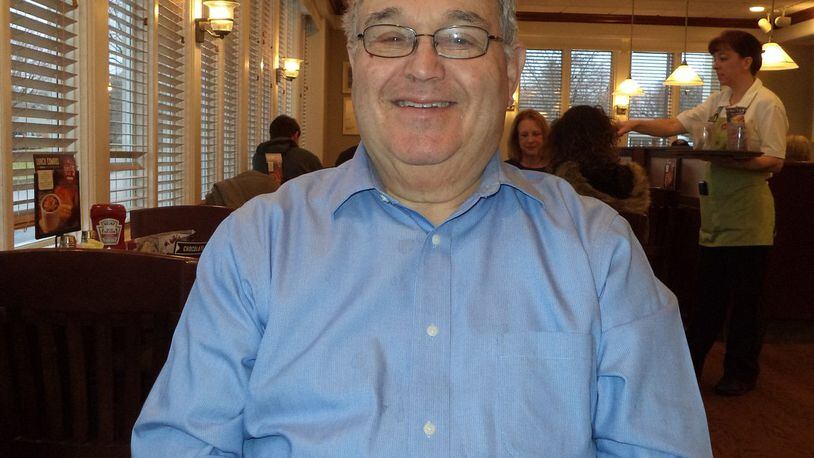As a 25-year volunteer for 25 for Ohio Operation Lifesaver (OHOL), a nonprofit organization dedicated to promoting safety on and around railroad tracks, Meckstroth is a regular presenter at Clark State Community College’s CDL training course for truck drivers. He also teaches rail safety to Boy Scouts as part of the safety merit badge program.
“My grandpa lived near the Erie Railroad, and I used to watch trains with him. I became absolutely fascinated with trains,” said Meckstroth. Originally from New Knoxville, Ohio, Meckstroth has fond memories of earning the Boy Scout badge for railroading. “I got to ride in the engine from New Knoxville to Minster. It was really something.”
Following graduation from Ohio Northern University, Meckstroth worked a summer as a locomotive fireman, a job that exposed him to new aspects of railroading. Meckstroth then became a teacher and eventually was principal of Northwestern High School. But his love of trains continued to grow. In addition to Operation Lifesaver, Meckstroth is a volunteer with the Fort Wayne Railroad Historical Society and the Nickel Plate Road Historical and Technical Society.
“Operation Lifesaver is a proactive group. We talk to schools, civic groups and just about anyone who asks us to speak,” said Meckstroth. Operation Lifesaver offers Meckstroth the opportunity to blend his love of railroading with his message of safety.
Last year the Operation Lifesaver volunteers touched the lives of over 45,000 Ohioans and gave over 1,000 hours to OHOL. Meckstroth said the organization was founded in 1972 by an engineer for the Union Pacific railroad. “Many of our volunteers are railroad, law enforcement and medical people. They’ve seen the effects of a train accident or collision.”
“Our volunteers are the backbone of our organization,” said Gena Shelton, Operation Lifesaver state coordinator. “In 2015, Ohio saw a 200 percent increase in fatalities from vehicle/train collisions as well as an increase in pedestrian deaths. These statistics show that the work of our volunteers is more important than ever.”
Meckstroth, who calls himself a “nut” when it comes to trains, said his word of advice to pedestrians regarding railroad safety is “stay the heck off the tracks.” “People misjudge the speed of a train. They see it but they have no idea how fast it’s moving and it’s difficult for that train to stop.” For instance, train going 79 miles per hour takes between five and 10 seconds to clear a crossing. Motorists have been known to risk it and pull out thinking they’ll beat the train. “Before they realize it, it’s too late.”
Calling himself a messenger, Meckstroth enjoys speaking to groups hoping his presentation has an impact. He hopes the 21 presentations he did last year had some kind of impact on those attending. Explaining the difference between a passive crossing and an active crossing, Meckstroth said 100 percent of fatalities in 2016 occurred at active crossings, the crossings with gates, lights and bells. Passive crossings only have the crossbar sign. He reminds pedestrians that walking on railroad tracks or the rights-of-way on either side of the tracks is illegal. And, pedestrians are expected to respect flashing red lights at a railroad crossing.
For more information about railroad safety, to volunteer or to schedule a presentation for your group, visit Ohio Operation Lifesaver's website at www.oplifeohio.org.
Contact this contributing writer at pgmcginnis45419@yahoo.com.
About the Author
